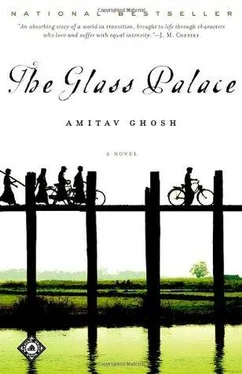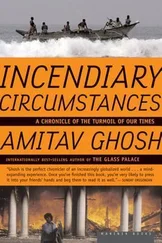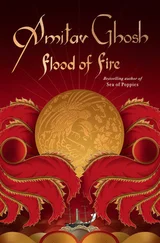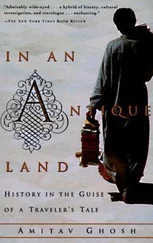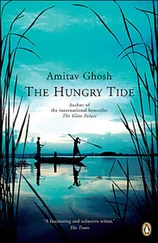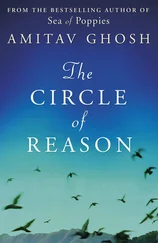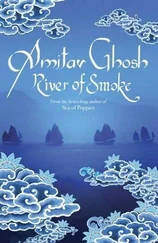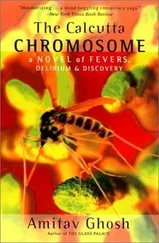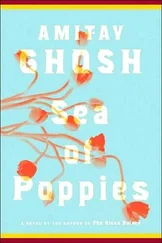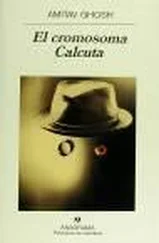Then came the bombing of Rangoon and the great northwards exodus of the Indian population. When the first refugees arrived in Calcutta, Bela sought them out, asking for information, citing names, addresses. She learnt nothing.
It was also in 1942 that Mahatma Gandhi launched the Quit India movement. Uma was one of the many thousands of Congress workers who were imprisoned. Some were gaoled until the end of the war. Uma’s stay was relatively short; she fell ill with typhoid and was allowed to return home.
Uma had been home a couple of months when, one afternoon, her elderly gatekeeper came to tell her that there were some destitutes outside, asking for her. This was only too common at the time; Bengal was in the throes of a famine, one of the worst in history. The city was full of starving migrants from the countryside; people were stripping the parks of grass and leaves, sifting through the sewers for grains of rice.
At Lankasuka, such spare food as there was was distributed to the poor once a day. On that particular day, the morning’s food distribution was long over. Uma was busy at her desk when the chowkidar walked in to tell her about the destitutes. She said: ‘Tell them to come back tomorrow, at the right time.’
The chowkidar went away, only to return shortly afterwards. ‘They won’t leave.’
Bela happened to be at hand. Uma said: ‘Bela, go and see what the matter is.’
Bela stepped out into the courtyard and began to walk towards the gate. She saw a man and a woman holding the metal bars. Then she heard a voice, saying her name, in a hoarse whisper—‘Bela’—and she looked closely at their faces.
Uma heard a scream and ran out into the courtyard. She snatched the keys from the chowkidar’s hands. She went running to the gate and threw it open.
‘Look.’
Rajkumar was kneeling on the pavement. He held out his arms and they saw that he was holding a child, a baby — Jaya. Suddenly the baby’s face turned a bright, dark red and she began to cry at the top of her voice. At that moment the world held no more beautiful sound than this utterance of rage: this primeval sound of life proclaiming its determination to defend itself.

It was not till the latter months of the next year, 1943, that the first rumours of the Indian National Army began to reach India — but this was not the same force that Arjun had joined, in northern Malaya. The first Indian National Army had not lasted long. About a year after its founding, its leader, Captain Mohun Singh, had disbanded it, fearing that the Japanese were trying to take it over. The army was resurrected by Subhas Chandra Bose, the Indian nationalist politician, who reached Singapore in 1943 by way of Afghanistan and Germany. Bose reinvigorated the Indian National Army, drawing tens of thousands of new recruits from the Indian populations of South East Asia: Arjun, Hardy, Kishan Singh, Ilongo and many others joined.
At the end of the war thousands of members of the Indian National Army were brought back to India as prisoners of war. To the British they were JIFs — Japanese Inspired Fifth Columnists. They were regarded as traitors — both to the Empire, and to the Indian army, the bulk of which had continued to fight for the Allies, in North Africa, southern Europe, and finally in the British counter-invasion of Burma. The Indian public, however, saw the matter quite differently. To them imperialism and Fascism were twin evils, one being a derivative of the other. It was the defeated prisoners of the Indian National Army that they received as heroes — not the returning victors.
In December 1945 the colonial government chose to bring charges against three members of the Indian National Army— the famous ‘Red Fort Three’: Shah Nawaz Khan, Gurbakhsh Singh Dhillon and Prem Sahgal. The country erupted with protests and demonstrations; support committees were formed all over India, despite an official ban. General strikes shut down entire states; students held huge public meetings defying curfew orders. In the southern city of Madurai two people died after the police opened fire on a demonstration. In Calcutta tens of thousands of people poured into the streets. They took over the city for several days. Dozens were shot by the police. In Bombay, naval ratings mutinied. For the Congress Party the trial was a windfall. The party had lost the momentum it had gained in the pre-war years and it badly needed an issue that would serve to mobilise the country. The trial provided just such a cause.
Once the trial got under way, the prosecution quickly ran into problems. It was not able to produce any evidence to link the Indian National Army either with Japanese atrocities in South East Asia, or with the mistreatment of British and Australian prisoners of war. While it did prove that some Indian prisoners had indeed been mistreated, none of these cases had any link with the three defendants.
On December 1, 1945, Bhulabhai Desai, the chief defence lawyer, rose to make his concluding address. ‘What is now on trial before this court,’ he said, ‘is the right to wage war with immunity on the part of a subject race.’
There was essentially only one charge against his clients, he argued, that of waging war against the King. All the other charges, he claimed, were derived from the first. It fell to Desai to demonstrate that international law recognised the right of subject peoples to wage war for their freedom and this he did by citing a series of precedents. He showed that the British Government had itself recognised this right, when expedient, in cases that dated back to the nineteenth century. They had, for example, supported the Greeks and a number of other nationalities in rebellions against the Ottoman Empire; more recently, they had supported the Polish National Army and Czechoslovak rebels; they had similarly insisted on the right of the French maquis to be treated as belligerents even though the Government of Marshal Pétain was at that time the de jure and de facto Government of France. The trial ended with all three defendants being found guilty of ‘waging war against the King’. They were sentenced to transportation for life, but all three had their sentences commuted. They were set free and were received by tumultuous crowds.
Hardy was by this time a national figure (he was later to become an ambassador and a high-ranking official of the Indian Government). He came to see Jaya’s grandparents in Calcutta in 1946. It was from him that they learnt that Arjun had died fighting in one of the INA’s last engagements — fought in central Burma, in the final days of the war.
At this point in the conflict, the Japanese were in retreat and the Allied Fourteenth Army, under the command of General Slim, was advancing rapidly southwards. The Indian units in central Burma were among the last to continue resisting. Their numbers were tiny and they were armed with obsolete weaponry, dating back to the early days of the war. The forces they were fighting against were often mirror-images of what they themselves had been at the start of the war: most were Indians, often from the same regiments, often recruited from the same villages and districts. It was not usual for them to be fighting their younger brothers and nephews.
The Indian National Army’s resistance at this stage was largely symbolic, undertaken in the hope of inspiring a revolt in the Indian army. Although they were never a serious threat to the victorious Fourteenth Army they were more than a minor irritant. Many fought and died with great courage, providing heroes and martyrs for the movement. Arjun was among those who had died a hero, Hardy said. And so had Kishan Singh. That was all they knew about Arjun’s death and they were content that it should be so.
Читать дальше
Конец ознакомительного отрывка
Купить книгу
